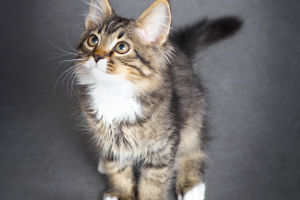When we think of animals that can mimic human speech, the first creature that probably comes to mind is the parrot. Parrots, like the macaw, cockatoo, and African grey, are famous for their remarkable ability to imitate human words.
But here's something you might not have considered—why can parrots talk, but not primates like chimpanzees and monkeys, even though they share similar biological traits to humans?
Let's explore the fascinating world of parrots and uncover the reasons behind their unique speech abilities.
What Makes Parrots Different?
Many people are surprised to learn that parrots, despite lacking lips and teeth, can still mimic human speech with astonishing accuracy. This brings us to an interesting question: Why can parrots mimic human voices when animals like chimpanzees, who share a more similar physical structure to us, can't? Researchers have proposed two primary hypotheses to explain this phenomenon.
The first hypothesis suggests that animals like chimpanzees and monkeys simply lack the physical structures in their vocal apparatus that allow them to produce human-like speech. In 1969, Lieberman and his team published a study where they simulated the vocal tracts of macaques and concluded that their vocal cords were not capable of producing the same sounds as humans. They applied the same method to chimpanzees in 1972 and came to the same conclusion: their vocal structures couldn't support human-like speech.
The Brain's Role in Speech
But there's another hypothesis that challenges the first one. This theory suggests that the problem isn't about the physical structures, but rather about the brain's ability to control and coordinate those structures for speech. This theory was first proposed during Darwin's time and became more widely accepted by the 1960s. Further research in 2016 provided additional support for this idea. Researchers observed live macaques using X-rays during vocalizations and found that their vocal tracts could indeed support speech-like sounds. However, they also concluded that the reason we've never heard a talking monkey is due to the limitations of their brain, not their vocal apparatus.
Parrots: Masters of Mimicry
Now, let's turn our attention to parrots. How is it that these feathered creatures, with completely different brain structures and vocal anatomy, can mimic human speech? Researchers studying parrots, particularly African grey parrots, have found some surprising insights. In 2002, a study revealed that grey parrots are exceptionally intelligent and capable of engaging in their form of "conversation" in the wild. Even though birds' brain structures differ significantly from mammals, the way they learn language is strikingly similar to how human children do.
What's even more fascinating is that, unlike humans who use vocal cords and lips to create sounds, parrots use a structure called the syrinx to produce their sounds. By controlling the muscles around the syrinx, parrots can manipulate the sounds they produce, much like humans control their vocal cords. When it comes to making popping sounds or certain consonants, parrots can even use their esophagus to assist in sound production, which is quite an impressive adaptation!
The Evolution of Speech Learning in Birds
It's amazing how evolution has shaped parrots and humans in ways that allow them to develop similar abilities for language learning. While parrots and humans are two completely different species, they have evolved parallel mechanisms to learn and imitate language. And though parrots may not understand the words they mimic in the same way we do, their ability to mimic is still incredibly complex and nuanced.
Conclusion: Don't Underestimate the Parrot!
So next time someone says “parrot talk” in a dismissive tone, remember this: these birds are far from simple mimics. Parrots possess remarkable cognitive abilities and are capable of using every part of their anatomy to recreate the sounds they hear. They may not have lips or teeth like humans, but their brains and syrinx make them language learners in their own right. In fact, the next time you see a parrot, you might want to give them a bit more credit for their skills in mimicry!
Now, Lykkers, the question is, what's the most impressive thing you've seen a parrot mimic? Let's share some stories!


